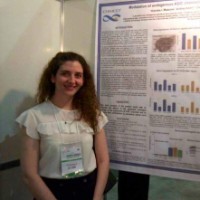Increase in the knowledge of spinal cord injury (SCI) pathophysiological mechanisms would help developing therapeutic strategies to improve neurological function. In this work, we have established a traumatic (compression, by an aneurism clip) and a chemical (kainic acid -KA) in vivo injury models, at the border of thoracic-lumbar axial level, using BALB/c and GLASTCreERT2;Rosa26Tom double-transgenic mice. The outcome was analysed by histology and locomotor behavioural tests (including the Basso mouse locomotor scale -BMS-). While traumatic SCI resulted in permanent impairment, locomotor deficiencies were partially restored in the KA model at 8 days after injury. In the chemical SCI model, some differences, between left and right sides, were observed in the foot printing and Ladder Rung walking task tests. Histological studies suggested an increase in the prevalence of Tom+ cells within the injury site at 14 days after traumatic injury. Our results might involve the recruitment of bone marrow stromal cells previously found to trigger regenerative mechanisms. Supported by Universidad Austral, CONICET and, ICTP-UNESCO.
P#172
Histologic and functional outcome of excitotoxic and traumatic in vivo spinal cord injury models
Graciela Lujan Mazzone
- Derqui (Pilar),
- Argentina
- Graciela L Mazzone ¹
- , Wendy Moncada Herrera ²
- , Martina Poodts ¹
- , Julieta Roncoroni ¹
- , Samuel Cockey ³
- , Romina Sierra ¹
- , Esteban J Fiore ⁴
- , Guillermo D Mazzolini ⁴
- 1 Developmental Biology & Regenerative Medicine Laboratory, Instituto de Investigaciones en Medicina Traslacional (IIMT), CONICET-Universidad Austral, Derqui-Pilar, Buenos Aires, Argentina
- 2 Universidad Nacional Pedro Ruiz Gallo, Lambayeque, Perú
- 3 College of Liberal Arts and Sciences, University of Florida, Gainesville, FL, USA
- 4 Gene Therapy Laboratory, IIMT, CONICET, Universidad Austral

